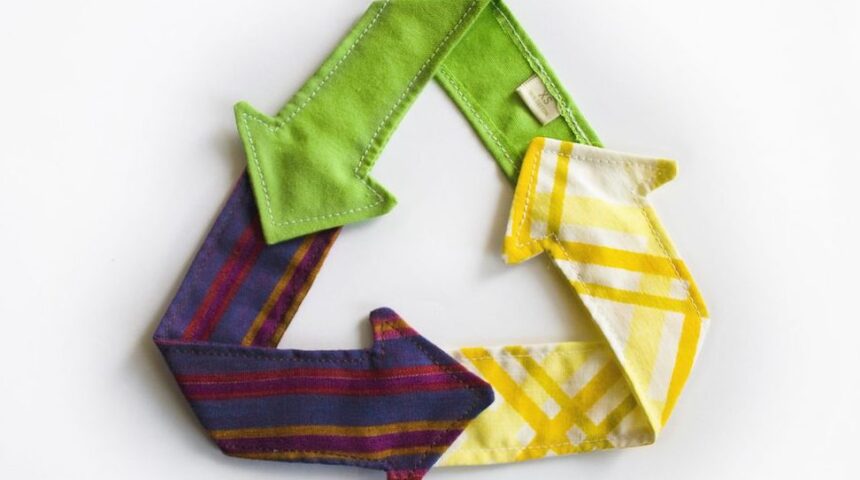
Textile Recycling Is the Next Priority for Communities
Two common methods are used to dispose of unwanted textiles worldwide. Communities toss the materials into landfills or use incineration. A third option is also available, but textile recycling occurs at a lower rate than even plastic water bottles. According to the Environmental Protection Agency (EPA), only 2.5 million tons were processed, accounting for 14.7% of the total amount disposed. [[1]] The EPA also recognizes that textile waste accounts for nearly 5% of all landfill space currently used in the United States.
California Moves Toward Zero-Waste Goals
The California legislature and Governor Gavin Newsom used the 2022 session to help the state take significant steps toward achieving zero-waste goals. One of those items is AB 1857, a bill that nearly 4,000 Earthjustice supporters helped to bring from concept to reality. [[2]]
Under AB 1857, diversion credits for municipal solid waste incinerators disappear. It redefines this technique as disposal since burning trash isn’t reducing or recycling textiles.
Under AB 939, which the state passed in 1989, all jurisdictions must divert at least half of their waste away from landfills. These materials must be put into reuse options, composting, recycling, or source reduction. The law permits up to 10% of this amount to go to incinerators, but AB 1857 stops that approach.
Until the Stanislaus County and Long Beach incinerators cease operations, they will continue to send pollution into the environment. Burning unwanted textiles only creates harmful air emissions and toxic ash, and these outcomes impact low-income and minority families the most.
Textile Recycling Should Be Included in Those Goals
The benefits of recycling textiles provide jobs and eliminate waste, which are the primary arguments used to support the continued use of incinerators in California. Instituting these programs in the state would unlock billions of dollars that currently go to landfills and other disposal methods.
One of the easiest ways to recycle unwanted textiles is to take apparel and other items to reuse stores. Try incorporating things into your wardrobe that can be worn for several seasons before they need to be recycled. Once we start reusing textiles instead of incinerating them, our production processes can change. It takes about 700 gallons of water to make a single t-shirt. How many of those are tossed in the trash each year?Recycled clothing items use 99% less water to make the same apparel that comes from raw materials. The advantages don’t stop with water consumption. When we recycle textiles, the environment sees a 50% comparative reduction during manufacturing. For every pound we can recycle, up to four pounds of carbon dioxide won’t go into our atmosphere. [[3]]
Recycling Textiles Reduces Pollution Risks
Although California’s two incinerators say that they reduce waste and lower greenhouse gas emissions compared to landfilling practices, those figures don’t typically include the ash that burning generates. CalRecycle and the LA County Department of Public Health noted ash concerns at the Long Beach incinerator, including materials on and near the roads. This material typically gets landfilled, meaning lead and mercury are still introduced into the waste processing circle.
Inspections in 2018 found that ash accumulation was clogging some sewage drain gates. When precipitation flows through those systems, the toxic materials can make their way into public waters and the ocean. [[4]]
The two facilities create enough power for about 43,000 homes in California. We can invest money into clean energy production to replace incinerator losses while introducing community-based recycling programs to lessen the load that textiles place on our waste management systems.
Now Is the Time to Take the Next Steps Forward
Local governments have already spent millions of dollars subsidizing the upkeep and operations of these aging facilities without receiving any tangible benefits in return.
AB 1857 creates a zero-waste equity grant program, allowing funds to support targeted investments and community actions to create circular economies. Unfortunately, the bill was signed into law without any funding provided. [[5]]
We must also look at the incinerator contracts coming due in the next five years. The City of Long Beach can renew its agreement in 2024, while Stanislaus County is up for renewal in 2027. Instead of continuing to place high pollution burdens on those who live near these facilities, we have the chance to create change.
Most textile recycling programs are privately owned and operated. Adding this option to curbside programs and community collection efforts could significantly reduce waste and greenhouse gas production while reducing our overall spending.
Textile recycling is the step forward that makes sense as we invest in the recently passed grant program. Contact your state representatives today to encourage them to fund AB 1857, and make sure to recycle your textiles at your Neighborhood Donation Recycling Station!
[[1]] https://www.epa.gov/facts-and-figures-about-materials-waste-and-recycling/textiles-material-specific-data
[[2]] https://earthjustice.org/about
[[3]] https://madeforfreedom.com/blogs/blog/how-recycling-your-clothes-can-save-our-planet
[[4]] https://www.waste360.com/waste-energy/story-california-s-two-incinerators
[[5]] https://leginfo.legislature.ca.gov/faces/billNavClient.xhtml?bill_id=202120220AB1857
